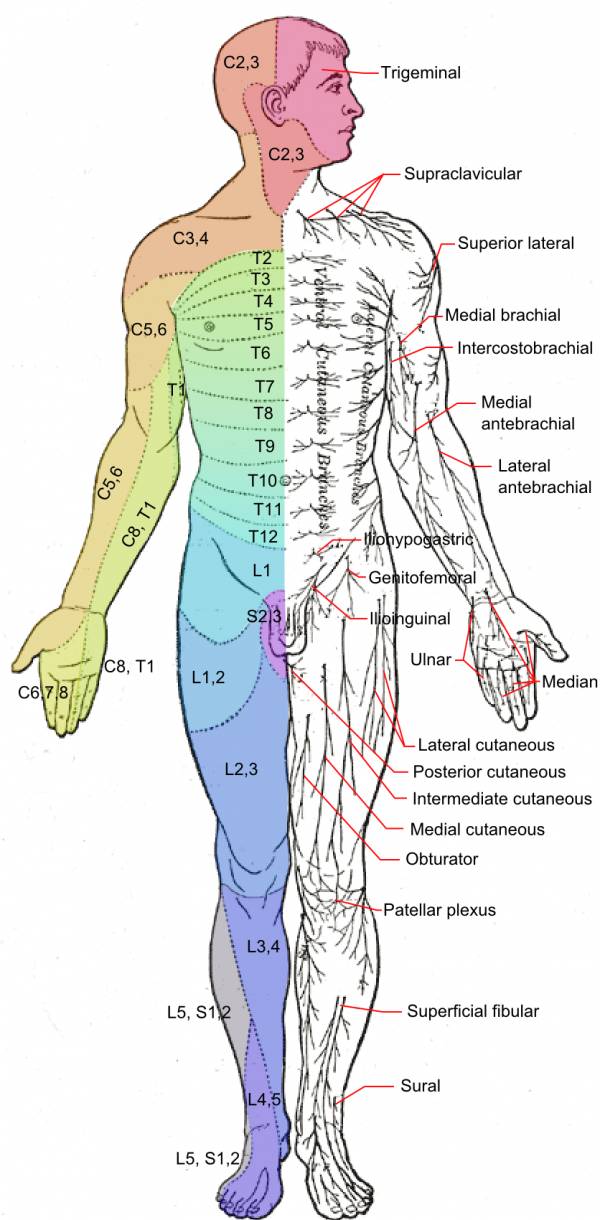In a previous article, Traver Boehm discussed three ways to address a neck stiffness, soreness, or injury. Traver enlisted the expertise of a fellow practitioner to give three tips and suggested using manual cervical traction, hydrotherapy, and acupressure trigger point relief for the management of neck pain. While these methods may be helpful initially in the treatment of neck pain, when pain persists, it is imperative to treat with the correct modality based on diagnosis.
In a previous article, Traver Boehm discussed three ways to address a neck stiffness, soreness, or injury. Traver enlisted the expertise of a fellow practitioner to give three tips and suggested using manual cervical traction, hydrotherapy, and acupressure trigger point relief for the management of neck pain. While these methods may be helpful initially in the treatment of neck pain, when pain persists, it is imperative to treat with the correct modality based on diagnosis.
The cervical spine consists of seven vertebrae stacked below the occiput (base of the skull). The spinal cord traverses the middle of the spinal canal formed by these vertebrae stacked upon one another. At each vertebral level, nerve roots exist and give rise to peripheral nerves that send motor and sensory input to specific areas of the upper extremity, mapped out as myotomes and dermatomes, respectively (see below). In between each vertebra is a cartilaginous disc that provides cushion and structural support to the spine. Additionally, there are a multitude of muscles and ligaments that continue to support the cervical column and head.
Neck injuries can range from just a muscle strain to disc and nerve injuries, and subsequent peripheral neural entrapment. The treatment modality for any neck injury should be strictly dependent upon the diagnosis so as to avoid incurring further damage.
Neck Strains
Neck strains (strains are muscular, sprains are ligamentous) are usually felt with a specific movement, resulting in soreness with movement, tenderness to palpation, and general neck discomfort. Usually, there are no peripheral symptoms. In the case of a muscle strain, the techniques to heal a stiff, sore or injured neck in this previous article are wonderful. Gentle traction, ice, Epsom salt soaks, and gentle mobility will usually resolve the strain.
Headaches, Numbness, and Tingles
So let’s say you have this “neck thing.” What begins as a muscle strain evolves over a period of weeks to headaches, jaw pain, decreased range of motion, and then you begin getting this crazy numbness or tingling in your arm or hand. How many of us actually do something about it, and how many of us continue to push through the pain and the problem?

If you begin to have headaches associated with your decreased range of motion and muscle strain, seek out a manual physical therapist. Cervicogenic headaches are frequent following neck trauma (anything from a motor vehicle accident to landing wrong in a kipping handstand push up). The articulation between the first and second cervical vertebrae refers pain and other symptoms into the head and face. (You can see this in the graphic to the right, where “C” stands for cervical and the number refers to the associated disc that refers pain or numbness to the mapped area.) In the absence of further pathology, mobilization to restore normal joint mechanics and soft tissue work can assist in decreasing the headache symptoms and getting you back to a pain-free life.
When any peripheral symptoms, numbness, tingling, weakness, etc., begin to associate themselves with neck pain, it’s imperative to get the problem checked out by an orthopedist, physical therapist, or physical medicine physician. When the body starts to lose motor and sensory input in an extremity, the source of the problem is most often central. This means that there is something encroaching on the nerve root at a specific segment. In this case, the last thing you want to do is grab a towel and a friend and try some traction. Ice, Epsom salt bath, and acupuncture or acupressure, on the other hand, are fine and won’t make the problem worse.
When Traction Is Appropriate
Once the diagnosis of a discogenic or neurogenic cause of neck pain is identified, traction may be one of the treatment modalities used by your physical therapist or physician. Traction is a pulling force exerted on the cervical or lumbar spine. This force creates vertebral joint distraction, can decrease the compression on a nerve or nerve root, and can loosen adhesions that develop in the sleeves that house the nerve. Traction is most useful in acute neck pain once the subsequent musculoskeletal spasm and pain has dissipated and in the absence of any peripheral weakness.
In summary, traction, acupressure, and hydrotherapy are all excellent approaches to the treatment of neck pain. It is imperative to have an accurate diagnosis if symptoms persist or progress peripherally, though. In those cases, home treatment can negatively impact your recovery, if not develop your problem into a more sinister condition.
Photo 1 courtesy of Shutterstock.
Photo 2 by Mikael Häggström (File:Gray797.png) [Public domain], via Wikimedia Commons.






